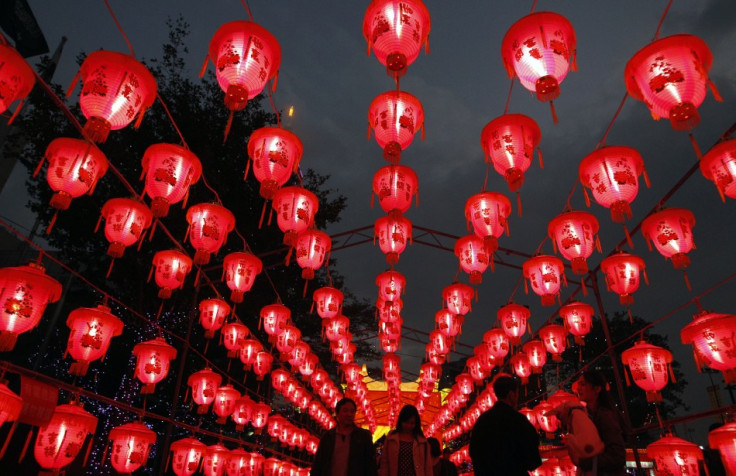Chinese Lantern Festival: When and what is the celebration marking end of Lunar New Year?

The annual lantern festival is one of the most important dates in the Chinese calendar, marking an end to Lunar New Year celebrations with colourful decorations, performances and firecrackers. It has been celebrated for more than 2,000 years on the 15th day of the first month of the lunar calendar. This year, the festival falls on 22 February.
What happens?
Decorative lanterns are hung in the street, fireworks are set off and special dinners are cooked, including small dumpling balls made of glutinous rice flour with a sweet filling. Celebrations from China to New York are a colourful spectacle of delicious food and street parties.
Not only does the Lantern Festival mark the end of the Chinese New Year, but traditionally it mostly celebrated the approach of spring and longer daylight hours. The festival began as a sign of appreciation of the first full moon of the new year, with simple decorations. Over time, the occasion has evolved to become a major celebration with ornate lanterns and other additions.
Where did the festival come from?
In the beginning of the Eastern Han Dynasty, Emperor Ming of Han was an advocate of Buddhism. After finding out some monks lit lanterns in temples to show respect to Buddha on the 15th day of the first lunar month, he ordered that all temples and households should light lanterns that evening. The custom gradually transformed into a festival among the people.

What are the myths and legends surrounding the Lantern Festival?
One story states the festival originated from the birthday of Tianguan, the Taoist god of good fortune, which coincides with the festival and so celebrations took place in the hope of good luck. Over time, the festivities became the modern-day Lantern Festival.
Another story behind the festival's origins centres on the Jade Emperor, one of the representations of the first god in Chinese culture, traditional religions and mythology. It highlights how the Jade Emperor's favourite crane was hunted and killed as it flew down to earth. Furious, the Emperor planned a firestorm as retaliation on the people, who were forewarned by his daughter.
A wise man from one village suggested the people hang red lanterns outside and create bonfires for three days, to trick the Jade Emperor into thinking the village was already ablaze.
© Copyright IBTimes 2025. All rights reserved.





















